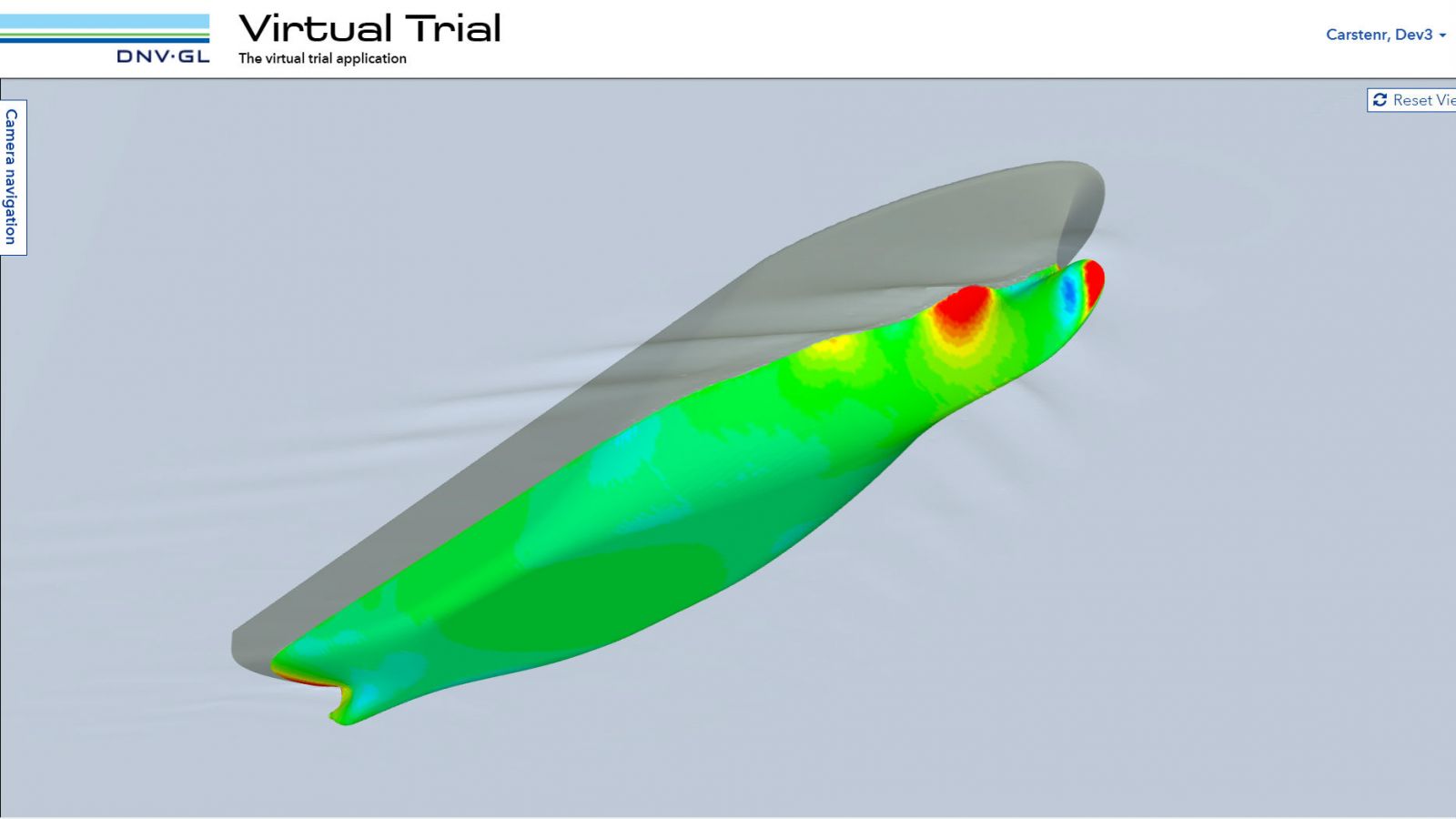DNV GL Brings CFD to Every Desktop

DNV GL’s new “Virtual Trial” application allows yards and owners to use computational fluid dynamics (CFD) simulation to analyze, compare and benchmark the fuel efficiency of hull design variants at full-scale. The results are available within one week, in a web-based report where users can see the CFD results and hull lines in 3D and gain more insight into flow details.
As CFD simulation technology has matured it has become a viable alternative to traditional model basin tests, while reducing lead time and costs. However, the computer resources and expert know how to design and carry out such tests are still not wide spread.
“What we have done with Virtual Trial is to let our customers run CFD simulations, without having to invest in CFD expertise,” says Carsten Hahn, Product Manager at DNV GL – Maritime. “Virtual trials can be launched in complete anonymity, from anywhere, at any time, by simply uploading the hull geometry file and defining the operating profile.”
The Virtual Trial application, removes the need for expert support by streamlining and automating the CFD simulation process. Without the need for any CFD specific input, users can conduct fully automated full-scale RANSE (Reynolds-averaged Navier-Stokes equations) VoF (Volume of Fluid) CFD simulations on the resistance and propulsion of their vessel. Users can upload individual vessel hull forms, run simulations with pre-set parameters and then easily compare their results against the results of similar vessels in the Virtual Trial database. Whether for a newbuilding or retrofit project, Virtual Trial reduces the barriers to full-scale CFD simulation testing and comparative benchmarking.
“We see many potential uses of the Virtual Trial application,” says Uwe Hollenbach, DNV GL - Maritime. “Design offices and ship yards can analyze and benchmark different hull options during the conceptual design phase, then track how design changes affect a vessel’s hydrodynamic performance. Ship owners can easily compare competing design proposals during the bidding process, gaining an impartial assessment of the designs at a fraction of the cost and lead time of model tests. For vessels in service, it could even act as a performance certificate, showing potential charterers or buyers how a vessel might perform within their operating profile.”
The products and services herein described in this press release are not endorsed by The Maritime Executive.
